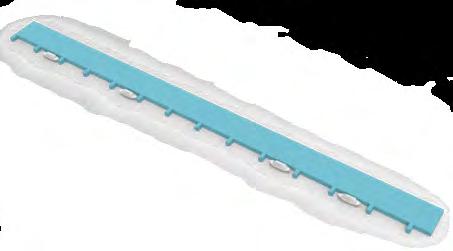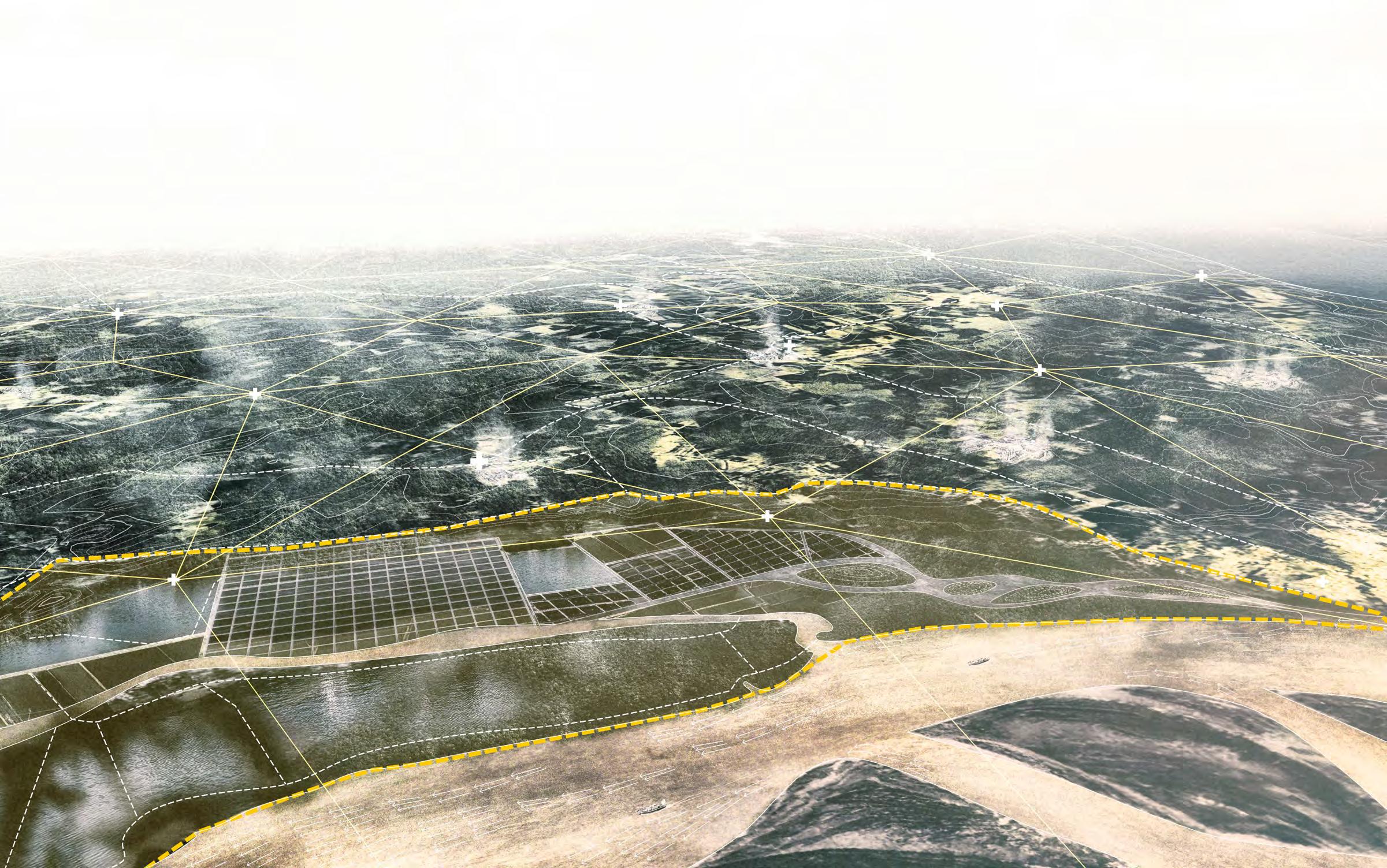
4 minute read
BREATHING AGAIN
SANTARÉM MASTERPLAN
2019 viewed more than 80,000 fires in amazon rainforest across all of Brazil, a nearly 77% year-to-year increase for the same tracking period, and the highest number of forest fire in Brazil since 2010. Is there an eco-friendly way to add output value?
Advertisement
Breathing Again
The Masterplan of Santarém
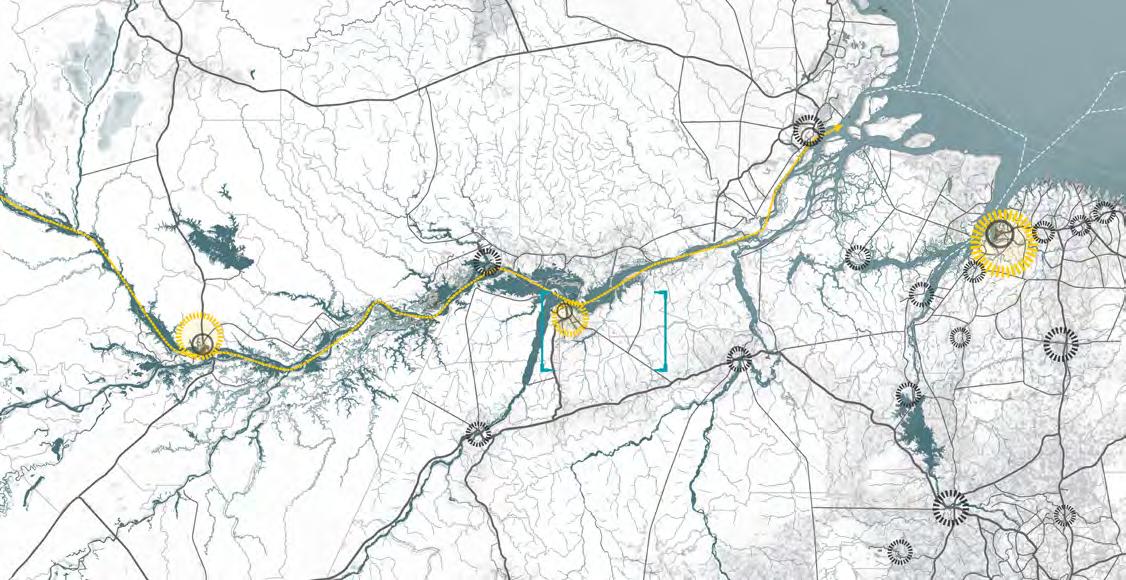
Instructor: Boris Yu
Site: Santarém, Pará, Brazil
Planning Area: 3500 km2
Team Work: Jingyan Sun, Zhimin Ma
The 2019 forest fires are blamed on President Bolsonaro's environmental policies to weaken protection of the rainforest and make it favorable for farmers to continue practices of slash-and-burn clearing, aiming at economical development.
Santarém is the second important city in Pará, a state in North Brazil, coverred with rainforest. The protection of forest and the low state GDP directly reflect the contradiction between economy and environment, where large area of forest is transformed to farmland and pastures.
Early 1900s 1960s-1970s 1970s-2000s 21th Century
Santarém is now the most important town on the Amazon between Belém, some 600 miles downriver to the east, and Manaus, about 450 miles upstream to the west and the financial and economic center of the western part of Pará.
The import-substitution policy resulted in Brazil's premature deindustrialization. The low value-added exports cannot create high income and the financial crisis influenced the tertiary industry so Brazil's economy faced great challenge in 2015-2016. To help recover the economy, President Bolsonaro's policy tended to open up the rainforest area. The over logging in Amazon rainforest in 2019, together with the comparatively dry climate resulted in the shocking forest fire.
1.1 RAINFOREST RESTORATION
1.2 WETLAND DEVELOPMENT
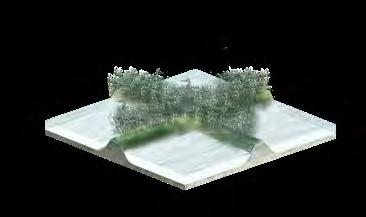
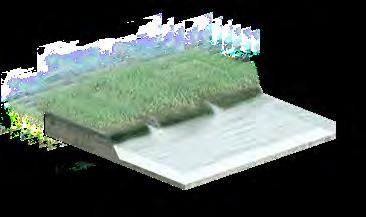
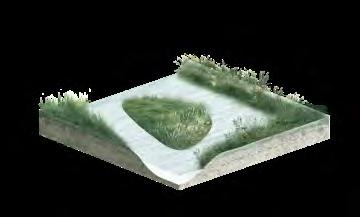
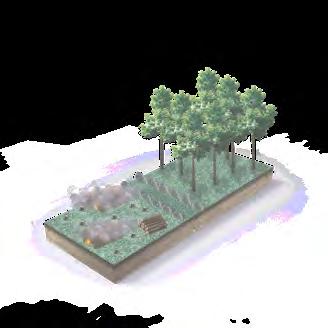
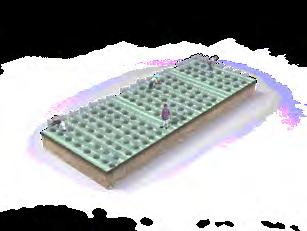
Steam Way
Islands and twisting banks are designed to slow down the river flow. Sediments help add nutrition to soil and the slow flow will not damage farmland.
Farmland
Wetland woth fewer water is used as farmland to grow rice.Ditches are connected with river to transport water.
Cane-based Fish Pond Wetland with more water is digged to make fish ponds and the soil are accumulated as ridges where sugarcanes can be planted.
Existing Farmland
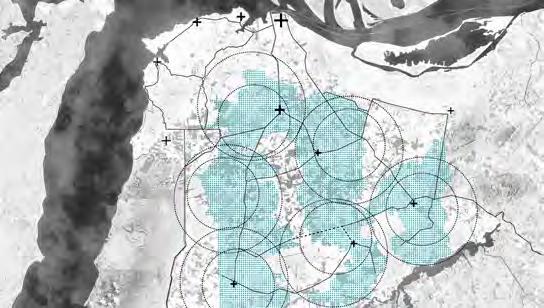
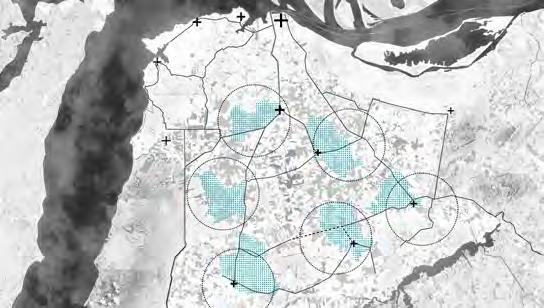
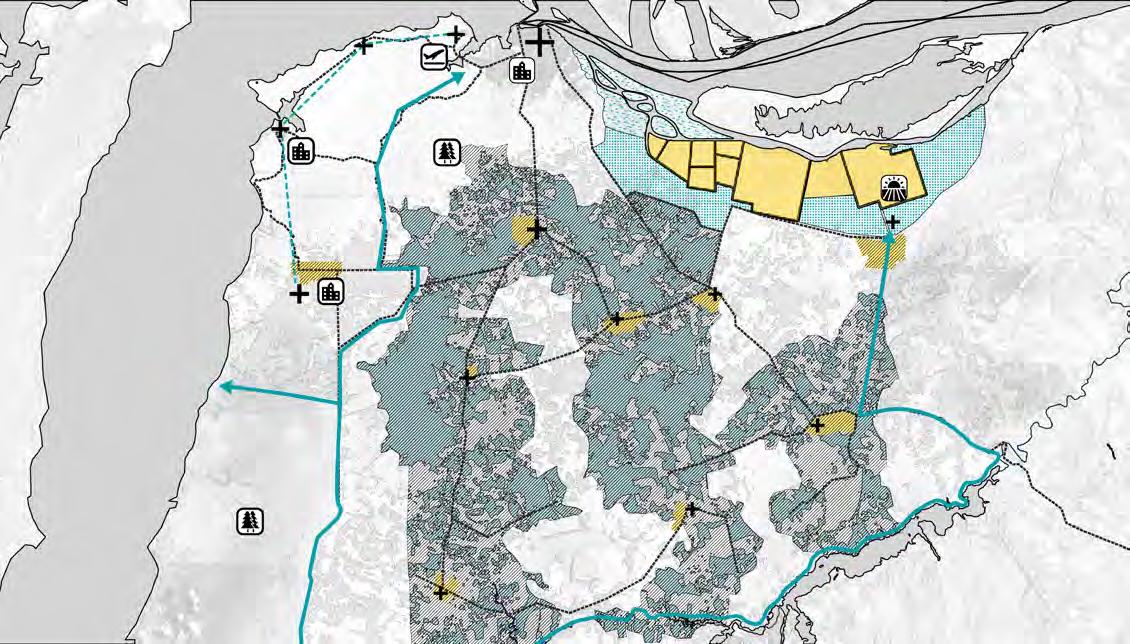
1st Year
Plant trees to make artificial forest. Divide the area with rocks.
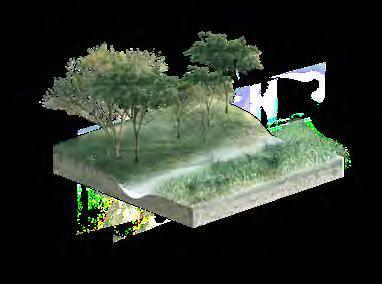
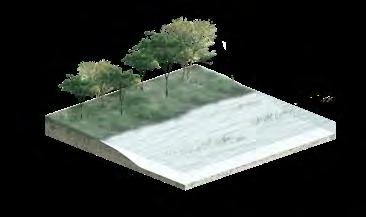
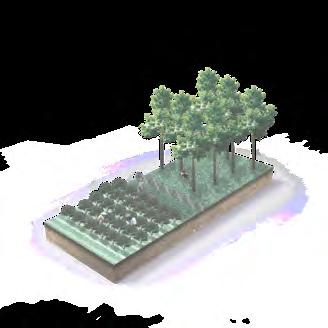

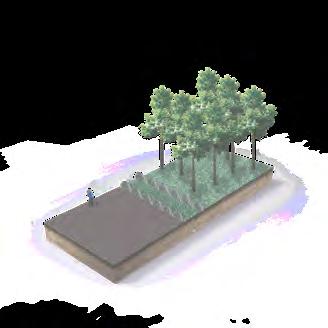
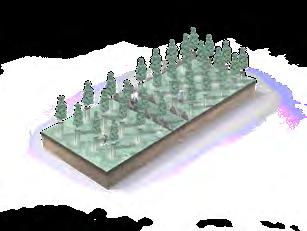
3rd Year
The artificial forest grows up.
Swamp
Remaining swamp is protected to maintain biodiversity. Wetland tourism brings more income.
Forest Farm
Artifial forest and farmland are irrigated by ditches with water from Amazon River.
Pond Slowed water offer proper environment for aquaculture, including chlorella cultivation.
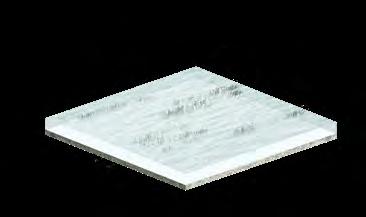
5th Year
After logging trees, clean the site with incomplete combustion. Rocks protect other parts of the forest.
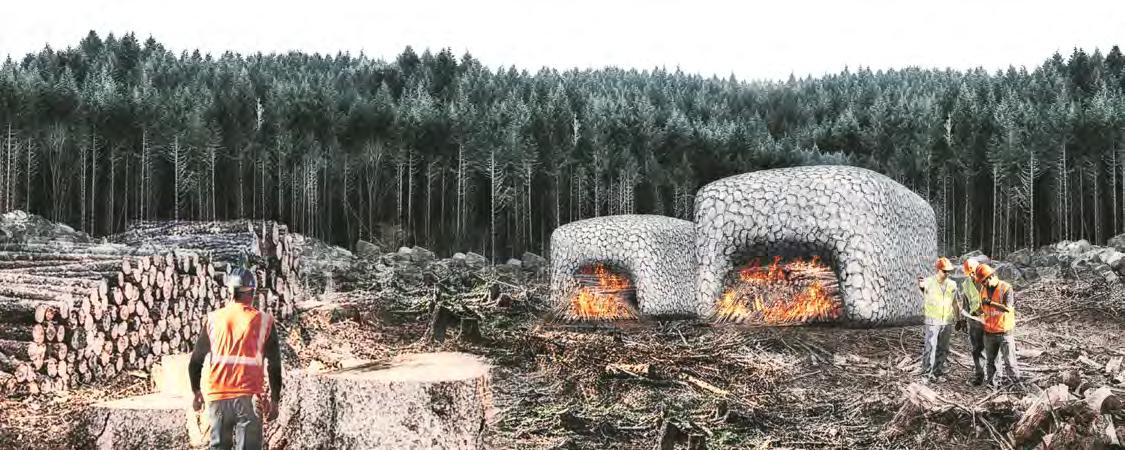
8th Year
After burning, remained charcoal fertilize the soil.
10th Year
Trees are replanted in the burned area. Other sites are protected and recover to nature-like forests.
INDUSTRY-TRANSPORTATION SYSTEM
Cellulosic Ethanol Production
The second generation bioethanol is produced from plant fibres, helping to ensure the food safety in Latin America and offer enough energy meanwhile.

Pretreatment
Chemicals and heat help to expose biomass to water, acid, pressure and heat.
Hydrolysis
Enzymes are added to biomass, breaking down cellulose chains into sugars.
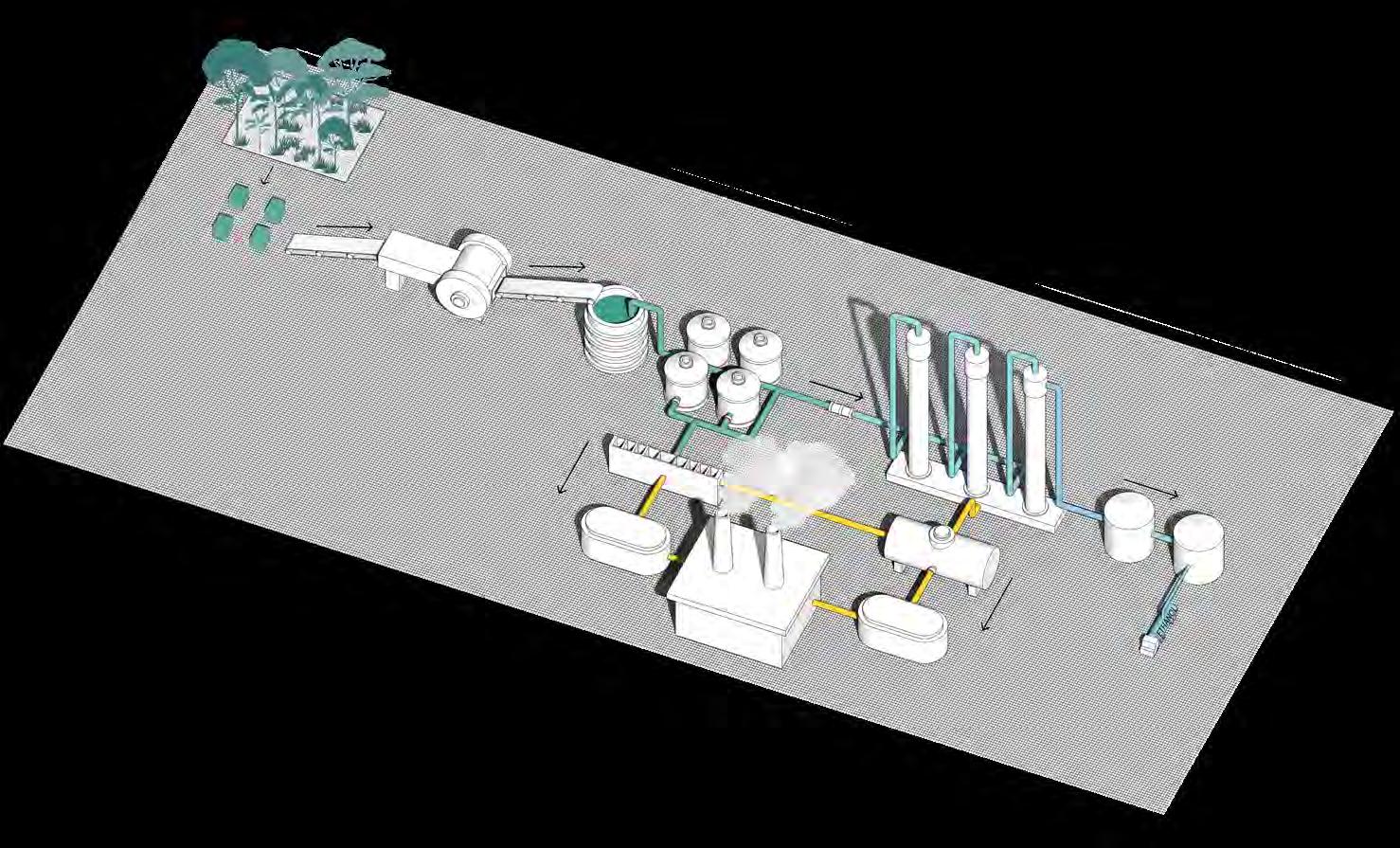
Fermentations
Yeast is added to consume the sugars, producing ethanol and carbon dioxide.
Distillation
Evaporation and condensation helps seperate ethanol from the mixture.
Grinding
The wetland agriculture area and the recovering forest are linked by the upgraded traffic network. Deforestation area beside crossroads are remained to building industrial parks to process raw materials and produce high value-added products. Freight stations and the road network help transport raw materials and products efficiently to factories and the new cargo port. The industrial system arround Santarém is formed.
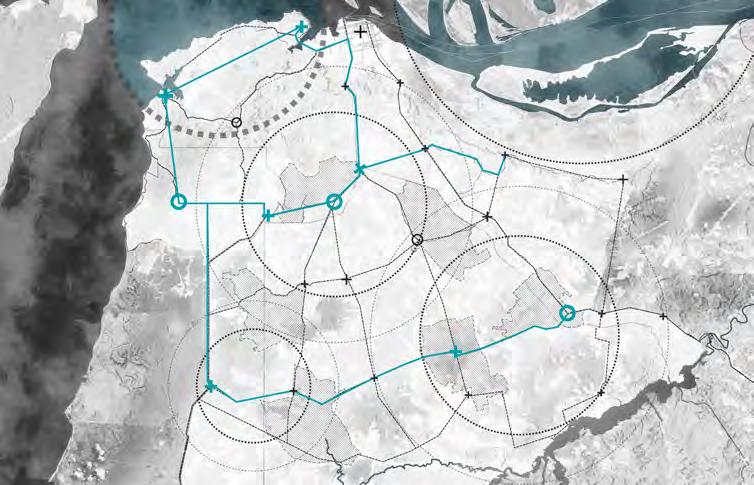
Feedstock
Non-edible plant material such as bagasse, corn cobs or corn stalks are gathered in bales. Biomass is then dilivered to the biorefinery.
Plant bales are fed into machines that grind up the material.
Energy From Waste
Lignin left over from ethanol making can be used as an additive to produce rubber, or it can be converted into energy by burning it to produce steam. Organic material in the waste water can be anaerobically digested to produce mathane, used as gas.
Storage
Finally, the ethanol is pumped into storage tanks, waiting for shipment to gasolin terminals or retailers.
Step3 Transportation Upgrading
Masterplan Port Plan
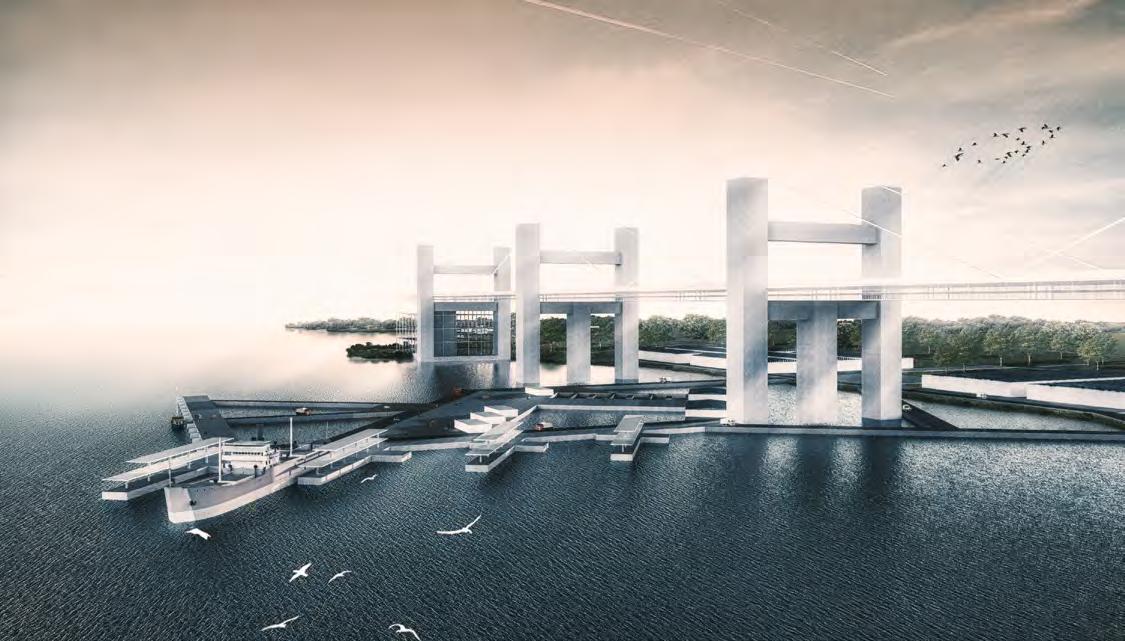
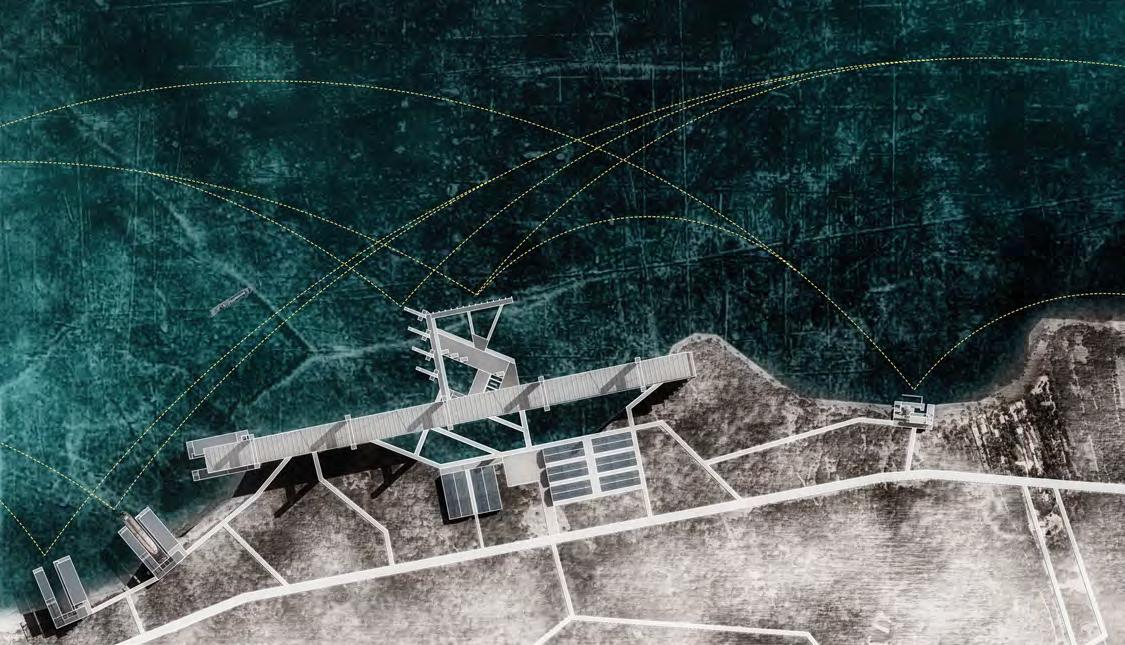
Farmland
Weland is transformed into eco-friendly farming area.
Forest
Deforested land is covered with eucalyptus and rubber tree farms.
Rubber Plants
Latex from ruubber trees is processed to produce rubber products as tires.
Wood Factories
Eucalyptus logs are ptocessed to produce papers and furniture.
Ethanol Plants
Crop wastes and wooden wastes are transformed into cellulosic ethanol.
Hi-tech District
Scientific research helps to enhance efficiency of production and protect environment.
Airport
The existing Santarém International Airport are connected with the road network.
Port
A new port is built 7km from the airport. A international trade zone is formed.
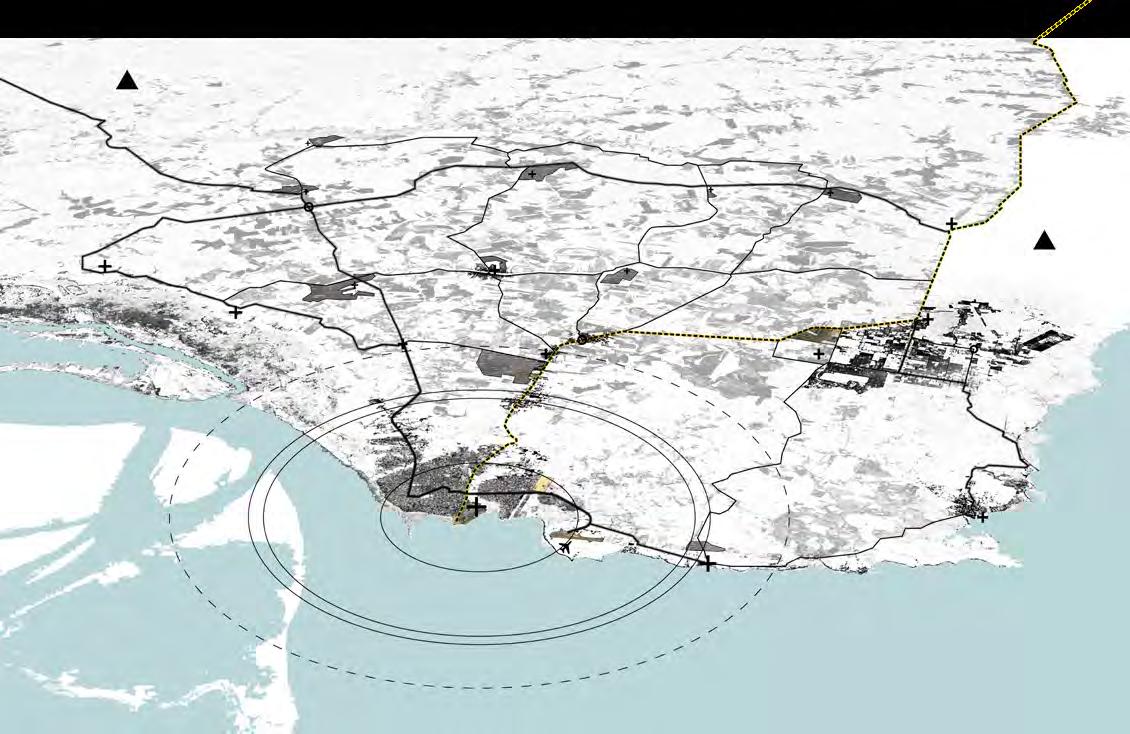
Paraíso Água Fria
Hi-tech Enterprises introduced
The port is 7km away from the Santarém International Airport, composed of ports for ships with different sizes from small touring yachts to Paramax ships. The port is also equiped with a large number container shelves to store the containers transported along the Amazon River. Office buildings and storehouses help to distribute and store cargoes. The market encourages free trade and becomes a tourist attraction.
FUNCTION & CIRCULATION
Containers imported by a cargo ship are shifted by a truck to the nearest elevator after being unloaded. Under the control of the computer, they are automatically lifted and loaded to the designated position of the shelf, details such as entry time and cargo type are also recorded automatically.
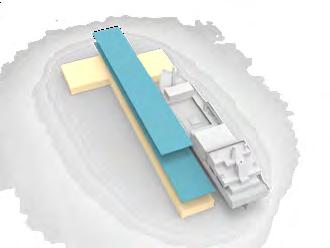
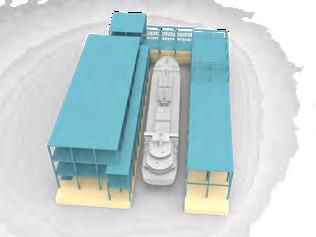
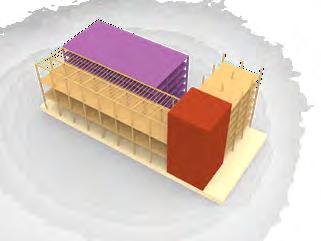
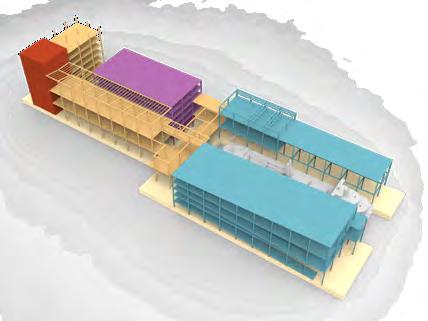
When containers need to be exported, the workers control them online and the system will easily lift them down from the shelf. Transported by truck again to the ships, they will leave the port.

A free trade marketacts as both a market and a harbor. Small and medium size ships can get into the market harbor, shifting off cargoes without registration.
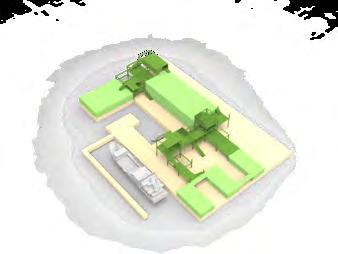
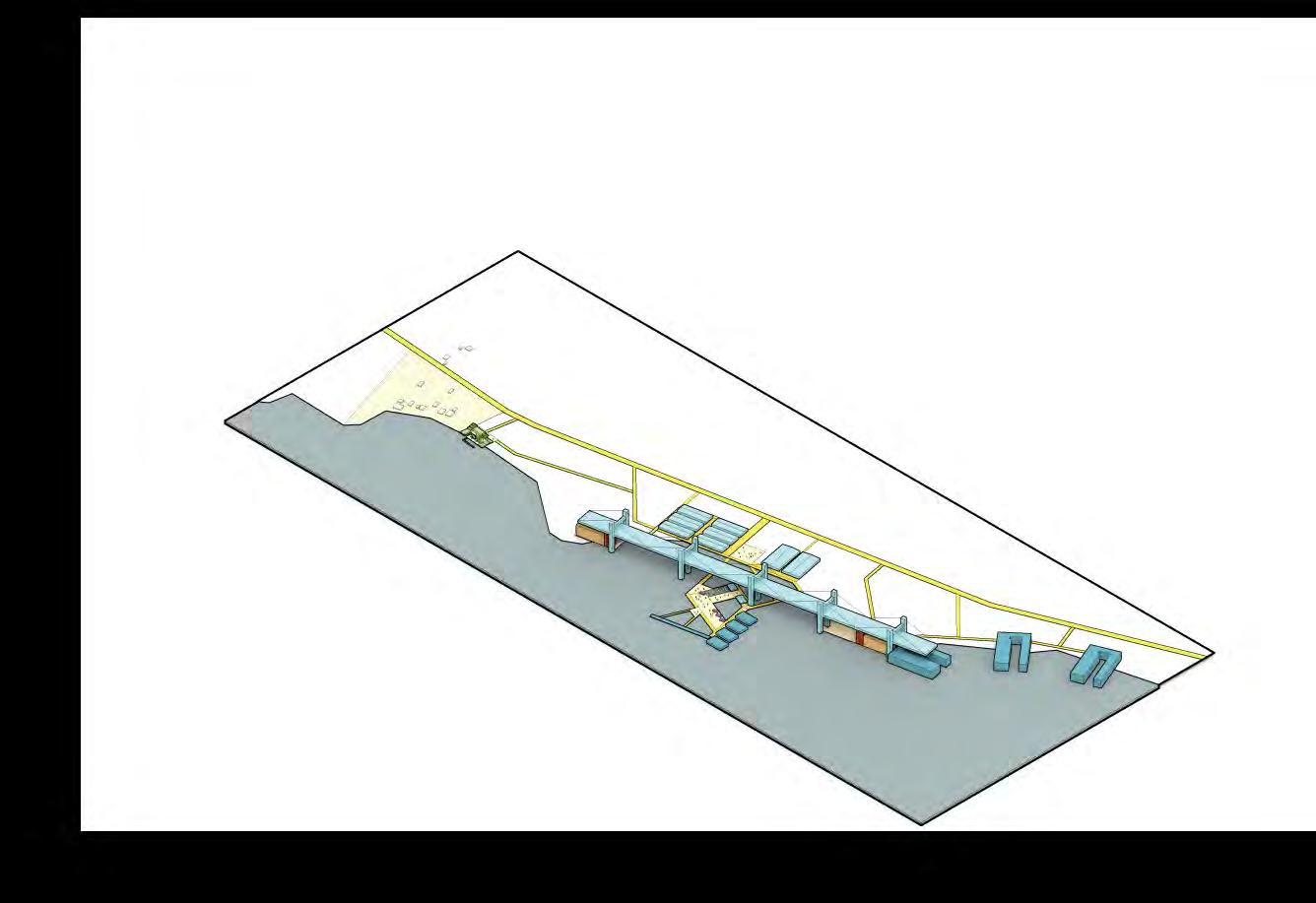
Besides the traditional shopping mall, vertical shops enables tourists to enjoy the river scene when shopping, especially the beautiful sunset.
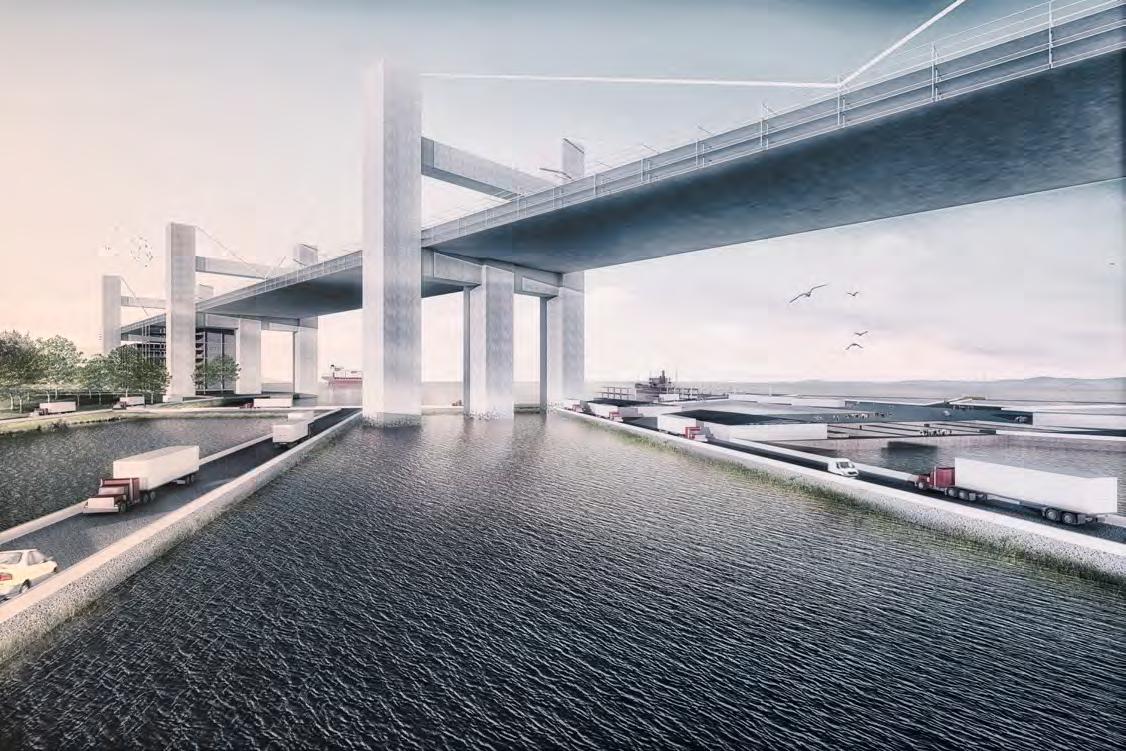
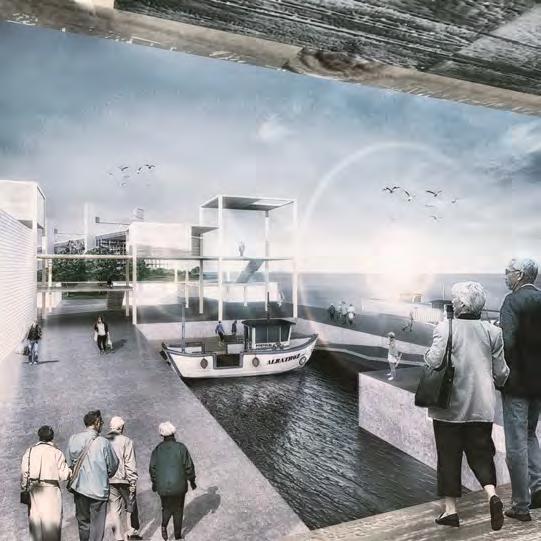
Ports for small boats and handy size ships gather in one place. Smaller ships and touring yachts moor to smaller ports.
Depositories in the port offer to store wet cargoes, for example, food in shortest time.
